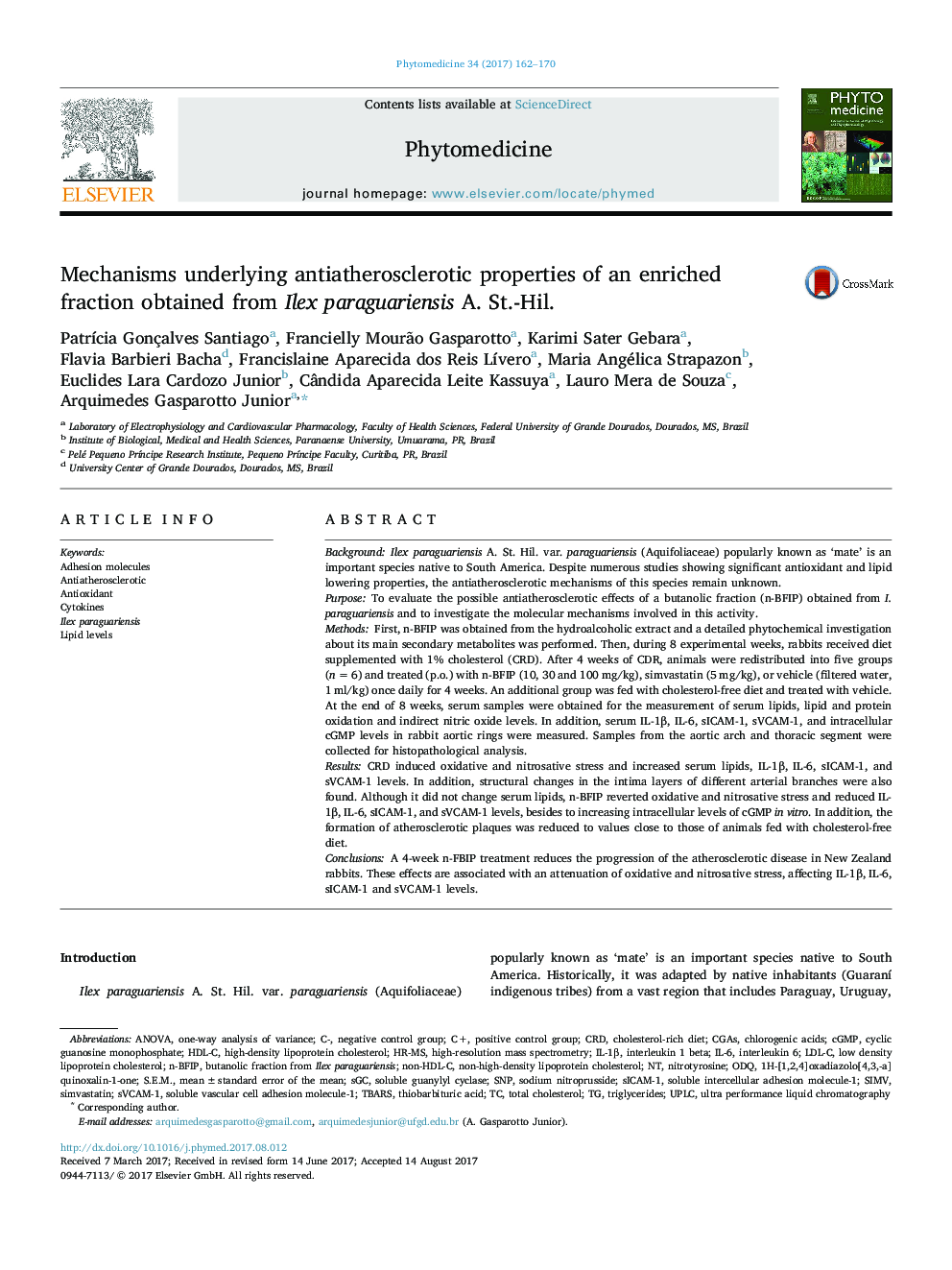| کد مقاله | کد نشریه | سال انتشار | مقاله انگلیسی | نسخه تمام متن |
|---|---|---|---|---|
| 5549318 | 1556685 | 2017 | 9 صفحه PDF | دانلود رایگان |

BackgroundIlex paraguariensis A. St. Hil. var. paraguariensis (Aquifoliaceae) popularly known as 'mate' is an important species native to South America. Despite numerous studies showing significant antioxidant and lipid lowering properties, the antiatherosclerotic mechanisms of this species remain unknown.PurposeTo evaluate the possible antiatherosclerotic effects of a butanolic fraction (n-BFIP) obtained from I. paraguariensis and to investigate the molecular mechanisms involved in this activity.MethodsFirst, n-BFIP was obtained from the hydroalcoholic extract and a detailed phytochemical investigation about its main secondary metabolites was performed. Then, during 8 experimental weeks, rabbits received diet supplemented with 1% cholesterol (CRD). After 4 weeks of CDR, animals were redistributed into five groups (nâ=â6) and treated (p.o.) with n-BFIP (10, 30 and 100â¯mg/kg), simvastatin (5â¯mg/kg), or vehicle (filtered water, 1â¯ml/kg) once daily for 4 weeks. An additional group was fed with cholesterol-free diet and treated with vehicle. At the end of 8 weeks, serum samples were obtained for the measurement of serum lipids, lipid and protein oxidation and indirect nitric oxide levels. In addition, serum IL-1β, IL-6, sICAM-1, sVCAM-1, and intracellular cGMP levels in rabbit aortic rings were measured. Samples from the aortic arch and thoracic segment were collected for histopathological analysis.ResultsCRD induced oxidative and nitrosative stress and increased serum lipids, IL-1β, IL-6, sICAM-1, and sVCAM-1 levels. In addition, structural changes in the intima layers of different arterial branches were also found. Although it did not change serum lipids, n-BFIP reverted oxidative and nitrosative stress and reduced IL-1β, IL-6, sICAM-1, and sVCAM-1 levels, besides to increasing intracellular levels of cGMP in vitro. In addition, the formation of atherosclerotic plaques was reduced to values close to those of animals fed with cholesterol-free diet.ConclusionsA 4-week n-FBIP treatment reduces the progression of the atherosclerotic disease in New Zealand rabbits. These effects are associated with an attenuation of oxidative and nitrosative stress, affecting IL-1β, IL-6, sICAM-1 and sVCAM-1 levels.
205
Journal: Phytomedicine - Volume 34, 15 October 2017, Pages 162-170